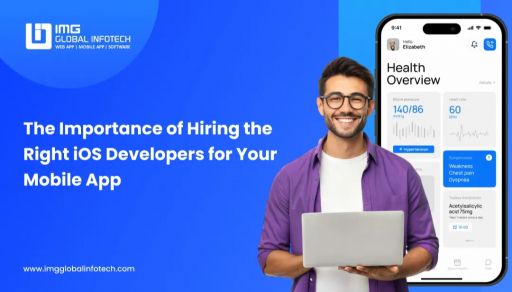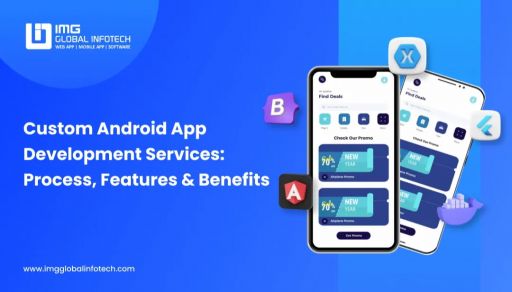Top Cross Platform App Frameworks In 2026 [Updated]
Dipti Singhal
Jul 10, 2025
![Top Cross Platform App Frameworks In 2026 [Updated] Top Cross Platform App Frameworks In 2026 [Updated]](https://d1y41eupgbwbb2.cloudfront.net/images/blog/cross-platform-app-development-frameworks.webp)
The ever-evolving fast-paced digital world has allowed businesses to find ways to create mobile apps that are more cost-effective while also allowing them to efficiently create more available mobile apps to larger audiences. In this scenario, cross-platform app development frameworks have become game changers in allowing mobile app developers to create apps for both mobile Android devices and Apple iOS devices with the same common code. This speeds up the development process, reduces costs, and standardizes functionality regardless of the platform used by users. There are many cross platform mobile app development frameworks that offer different advantages and choices in terms of performance, user-interface, and scalability which makes it confusing to choose. This blog will provide the best cross-platform app development frameworks dominating the market in 2026. Whoever you are, whether a startup or enterprise, this blog will help you make a better decision when creating your next app project.
What Are Cross Platform Development Frameworks?
Cross platform app development frameworks allow mobile app developers to create a mobile application that works across multiple platforms with the same common code. Because of that, these cross-platform are able to speed up the development processes, lower costs and speed up deployment of mobile applications.
Flutter has an easy to learn framework that is also quick and respectful of processing performance along with an expressive user interface (UI). React Native App Development has matured to be most commonly used cross platform mobile app development frameworks as it has the backing of Meta, and creating a mobile application also looks and feels just like a native application.
Xamarin is largely known as a Microsoft backed framework that also uses common software development concepts, such as .NET and C. Other big players are Ionic, and Apache Cordova. Ionic and Cordova allow organizations to reach a larger audience on both iOS and Android without duplicating work; therefore, they are ideal for startups and large organizations that want an efficient, scalable mobile app solution.
Top Cross Platform App Development Frameworks
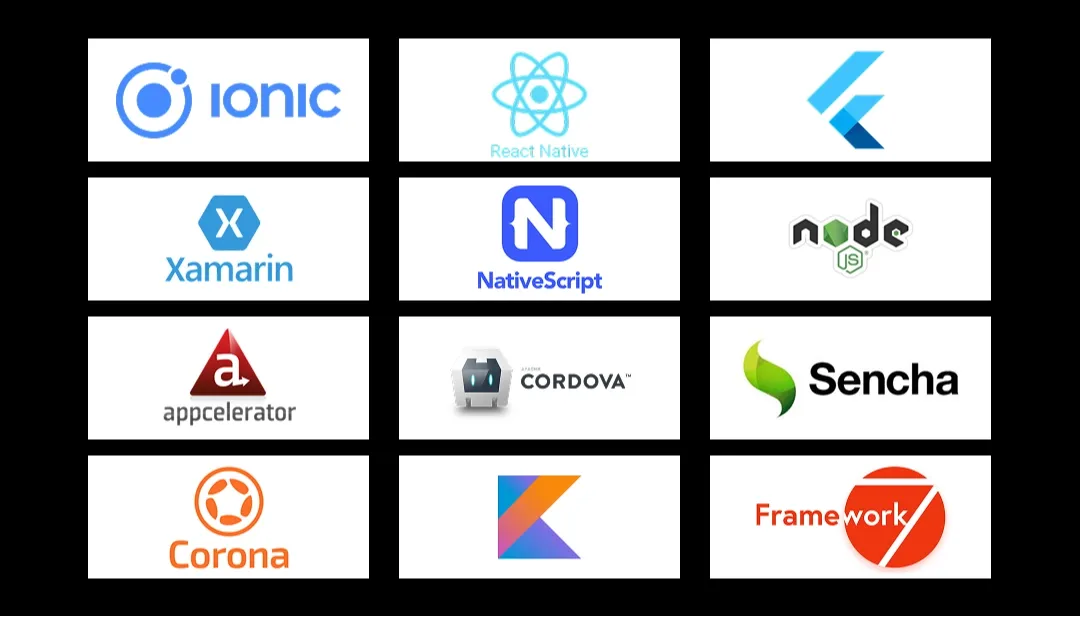
Here is the important list of top cross platform app development frameworks which you must need to know of. So let's dive straight.
1. Ionic
Ionic is an open-source front-end SDK that is built on web technologies (HTML, CSS, JavaScript/TypeScript) and originated with Angular. Ionic wraps the apps in a WebView through Apache Cordova or Capacitor and provides access to device native capabilities.
Ionic has a rich library of UI components and utilizes CSS-based animations to develop mobile progressive web apps that are feature-rich and interactive, approaching native speed levels. Furthermore, it allows developers to make apps in Angular, React, Vue, or vanilla JS depending on what stack they prefer. Although performance is not as good as that of fully native apps.
Ionic is well-optimized for rapidly prototyping apps, developing progressive web apps (PWAs), and leveraging existing skills gained from web-based apps.
2. React Native
React Native was developed by Meta and allows cross platform mobile application development company to write mobile apps in JavaScript and React. It combines casting native UI for display with JS logic to deliver a seamless and performant mobile friendly, native-like experience on iOS and Android.
The open-source community supporting React Native is large and growing; it is common for developers to find third-party modules - e.g., libraries for Google Maps, etc. React Native is flexible regarding native code development; you can utilize native code through Objective-C, Swift, and Java from JavaScript. The advantages consist of substantial savings in development time and cost because of WORA (Write Once, Run Anywhere).
Although the size of the app was potentially higher, and with some UI complexity came challenges, React Native still is prominent for cross-platform apps.
3. Flutter
Flutter is a free and open-source UI toolkit from Google, written in Dart, for natively compiled apps across mobile, web, and desktop from a single codebase. Flutter runs with its own rendering engine, has high performance, can produce pixel-perfect apps, and uses a reactive UI model, plus a large variety of customized widgets, and supports hot reloads to have rapid development cycles.
Flutter is ideal for MVPs where expressive and consistent UIs are necessary, and while the ecosystem may not be as mature compared to older top cross platform mobile apps development frameworks , the performance and visually rich applications position it as a top modern solution.
4. Xamarin
Xamarin is a Microsoft product, allowing you to build native Android, iOS, and Windows apps using C# and the .NET framework, with 90% sharing of code across platforms.
cross platform mobile app development companies who use Xamarin will use Visual Studio that integrates native API, UI components and plugins. Xamarin apps provide close to native performance, while supporting compile time checking, which reduces the number of runtime errors.
The main drawbacks are larger binaries, and less plugin ecosystem than JS based frameworks and perfect choice for enterprises which already leverage .NET skills, Xamarin provides native-like UX and significant hardware, multi-platform compatibility.
5. NativeScript.
This open-source js/typescript framework harnesses entirely native UI elements with no WebViews, while allowing up to 90% common code between iOS and Android, with Angular and Vue integration.
NativeScript can access native features through reflection, and allows developers to reuse existing CocoaPods, Maven, npm packages. While it has a smaller community and steeper learning curve than the other options, NativeScript is a great choice for developers wanting to achieve native-grade performance while getting to code using similar practices to web-based code experiences.
6.Node.js
Although primarily a server-side runtime-engine, Node.js can also be used for cross platform mobile app development frameworks - especially while developing back-end services for mobile applications.
Node.js allows for fast and scalable networking, as it is built on Chrome's V8 engine. JavaScript’s foundation as the back-end runtime provides a non-blocking I/O model with an event-driven, incredibly scalable networking architecture. Node.js is also capable of handling a very high number of concurrent connections (as would a web server) and very high rates of data streaming. Like the prior frameworks, Node.js has an extensive ecosystem of modules through npm.
One possible drawback of the language - because JavaScript is a single-threaded and event-driven model, if applications are requiring compute-end heavy operations - the performance may suffer. Node.js, with event-driven modeling, is often defined as a great choice for a cross-platform back-end service that is better suited to be used together with UI frameworks.
7. Appcelerator Titanium
Appcelerator (Titanium) allows JavaScript-based development with translation into native UI components, supports equally highly productive rapid prototyping with built-in tools and ArrowDB schema-less store, integrates with CI/CD systems and connectors (Azure, Salesforce, etc.).
A neat solution for developing native-like apps with a single code base, however, activity in the community has declined, with a relatively steep learning curve. It is great for rapid prototype development, and enterprise integration, but doesn't lend itself to long-term highly supported apps
8. PhoneGap (Apache Cordova)
PhoneGap (now Apache Cordova) adheres to more HTML5, CSS3 and JavaScript hybrid technologies to develop best frameworks for developing cross-platform mobile apps inside a native shell. It allows access to device features through its plugin mechanism, but significant distances have existed between Cordova and native app performance due to its WebView reliance. Cordova also underpins frameworks like Ionic and Framework7.
Cordova has a large plugin ecosystem size-wise, but it is mostly mature; while we expect this to be more performant than pre-Cordova for performance workloads, it looks less working as a performance technology.
9. Sencha Touch
Sencha Touch is a web-based framework offering rich UI components and themes that emulate native looking ongoing work across devices. Supports Hardware acceleration, as well as Cordova, device access for a far better working end user experience.
Specifically geared towards enterprise-grade apps, its best capability lies within scalable UI, and agnostic backend handling of enterprise-scalable data. However, it has a small community and only hybrids and not fully native apps. Best used if you're creating large business applications that are data-driven with rich UI
10. Corona SDK
Corona SDK is designed for creating 2D games and apps with Lua. It has over 1,000 APIs for graphics, audio, physics, and more. Corona, a popular framework for cross platform app development, gives you the ability to test changes and make iterations quickly across Mac and Windows. It's good for simple games and interactive apps, but not appropriate for traditional mobile applications since it is very focused on its use case.
11. Kotlin Multiplatform
Kotlin Multi Platform allows you to share business logic written in Kotlin across both Android App and iOS while taking advantage of platform specific UI components to connect native apps. The native platform apps can use Kotlin Multi Platform in their architecture with seamless access to shared logic without having to write it twice.
Although the Kotlin Multi Platform ecosystem is maturing quickly it's an alternative viable option for shared logic and if you are a mobile developer who wants to create native apps.
12. Framework7
Framework7 is an open source UI framework that builds native looking apps with HTML, CSS, and JavaScript (or Angular/React/Vue). Framework7 includes many components (lists, cards, forms, and smart selects), and developed mainly for people that want iOS style applications with a UI that is rich.
Framework7 will need Cordova or other build tools to create native packages. Framework7 offers a rich visual UI for your applications, but best suited for apps without so many requirements and an iOS aesthetic.
How To Choose The Best Development Framework?

Choosing the top Cross platform app development frameworks is a decision that is critical as it will affect your app's performance, cost, and scalability. Here is a six-step best cross platform mobile apps to help you choose the right framework for your project:
Step 1: Specify Your Project Requirements
Determine the scope and complexity of your app. Think about whether your cross platform mobile development will have real-time features, intense animations, and/or native device features. If your app is a simple MVP, you may be able to get away with lighter frameworks such as Ionic and Framework7. If your app is more complex and requires high performance such as heavy processing of data, you may want to explore React Native or Flutter. Defining your project goals will help you eliminate frameworks early on in the process.
Step 2: Define The Target Platforms
Choose where your app will be deployed (android, iOS, desktop, or web). Most frameworks are built for usage on iOS App and Android, but only a few forums are suitable for development of apps for the web or desktop. For example, Flutter is making significant improvements in the area of supporting web and desktop, and Xamarin is designed primarily for mobile and Windows applications. By choosing the best cross platform mobile app development frameworks that are aligned with your platform objectives, you will open opportunities for you and your clients.
Step 3: Understand the Performance Requirements
An effective app must be fast and responsive; this is particularly important if you are building a user-facing application. Frameworks such as Flutter and React Native come with near-native performance and reliability because they are not web-based and their rendering engines are compiled to native code. On the other hand, hybrid frameworks like Cordova may show performance lags because of their dependency on WebView. For performance-critical apps, go for frameworks that use native components.
Stage 4: Analyze Development Team Expertise
The success of your app also depends on your team’s skill set. If your team is well-versed in JavaScript, React Native or Ionic is a natural choice. A .NET/C# the team might benefit more from Xamarin. Dart, used in Flutter, might require additional learning time but offers a powerful UI toolkit. Choose a framework that minimizes the learning curve and maximizes productivity.
Stage 5: Check Ecosystem & Community Support
A framework with active community support and a rich plugin ecosystem saves time and money. React Native and Flutter have vast libraries, community packages, and regular updates. Tools like NativeScript and Xamarin are powerful for cross platform mobile programming but may lack third-party integrations. Assess available documentation, libraries, and community responsiveness before committing.
Stage 6: Consider Maintenance and Scalability
Think beyond launch. Will the framework be maintained long-term? Can it scale as your app grows? Opt for a framework backed by tech giants (Google, Meta, Microsoft) for better stability and ongoing support. Future-proofing your app ensures reduced rework and smooth scaling.
Conclusion
Choosing the best Cross platform app development frameworks is essential for building efficient, scalable, and cost-effective mobile apps. Whether it's Flutter's expressive UI, React Native's native-like performance, or Ionic's web-friendly approach, each framework offers unique strengths. The best choice depends on your project’s complexity, target platforms, team expertise, and performance needs. With the right framework, businesses can reach wider audiences faster while maintaining quality across Android and iOS platforms.
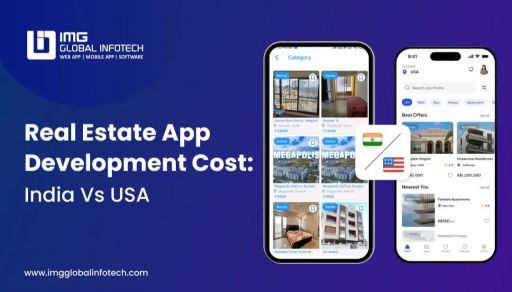 Real Estate App Development Cost 2026: India vs USA
Real Estate App Development Cost 2026: India vs USA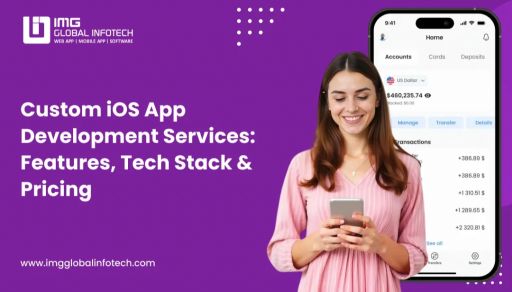 Custom iOS App Development Services: Features, Tech Stack & Pricing
Custom iOS App Development Services: Features, Tech Stack & Pricing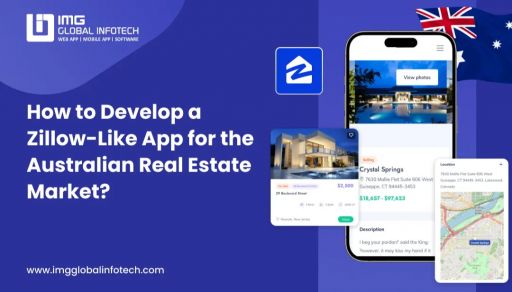 How to Develop a Zillow-Like App for the Australian Real Estate Market?
How to Develop a Zillow-Like App for the Australian Real Estate Market? Top Machine Learning Development Trends Shaping the Future
Top Machine Learning Development Trends Shaping the Future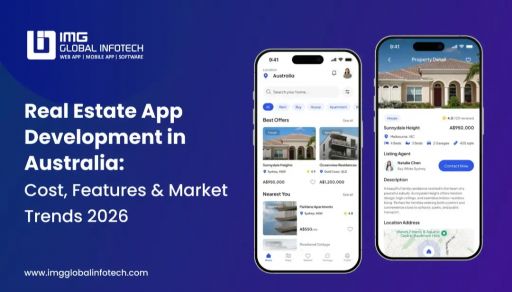 Real Estate App Development in Australia: Cost, Features & Market Trends 2026
Real Estate App Development in Australia: Cost, Features & Market Trends 2026
Dipti Singhal is a skilled Content Writing Specialist at IMG Global Infotech, with strong expertise in creating engaging, SEO-optimized content for various industries. She focuses on blending storytelling with effective keyword strategies to help businesses connect with their audience and improve their online visibility. Passionate about delivering high-quality content that drives real results, Dipti plays an essential role in strengthening the company’s digital presence.


